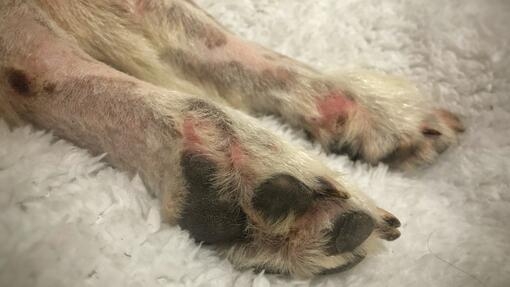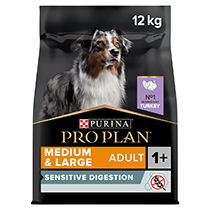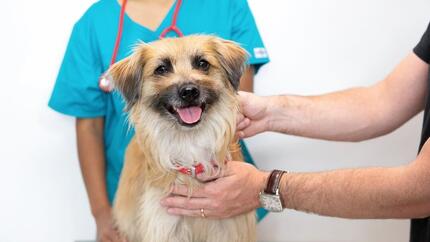Dog Skin Cancer: Symptoms and Treatment



You might find it strange to see ‘skin cancer’ and ‘dog’ in the same sentence. After all, our furry friends are covered from head to paw with luscious hair, and you would think that would offer them pretty good protection against overexposure to sun, which is the main route to developing skin cancer. But skin cancer isn’t always caused by the sun. Plus, there are enough spots on your dog with little to no fur for sun radiation to get to their skin. So, if you’re wondering whether you should worry about skin cancer signs in dogs or if it’s even possible for your pup to develop such an illness, here is what you need to know.
Can dogs get skin cancer?
Yes, dog skin cancer is one of the most common types of tumours in the canine world. UV radiation can find its way to areas such as the tummy, ears or the nose where little fur is present, triggering skin cancer. But skin damage caused by the sun can appear anywhere on your dog’s body too, particularly if their coat is thin, which can also increase the chances of skin cancer. So, it’s important for pet owners to know that skin cancer can occur in dogs and that there are a few ways to help decrease the chances of that happening.
And, while sun exposure is the leading cause of skin cancer in dogs, it’s worth noting that there are other causes which will be covered later.
What are the signs of skin cancer in dogs?
Looking out for skin lesions and scabs is the first step in checking your dog for signs of skin cancer. But there are other symptoms to be mindful of as well:
- Wart-like growths.
- Unusual bumps.
- Unexplained areas of discoloration.
- Discharges from skin lumps.
- Redness.
- Dogs scratching and chewing at their skin.
- Luckily, many unusual lumps are not cancerous. But visiting the vet for a check-up is always the best approach. The sooner skin cancer is caught, the easier it is to be treated.
What types of dog skin cancer are there?
Not all skin cancer is the same. Skin cancer in dogs varies depending on the area of the body where it’s found, what has caused it and how dangerous it is, and there are three main types of skin cancer in dogs:
Mast cell tumours
These tumours are typically found on the trunk of the body. Mast cell tumours are the most common type of skin cancer in dogs and can become inflamed due to an allergic reaction or an irritation.
Malignant melanomas
Malignant melanomas are usually found on lips, inside the mouth or on the nail beds. These types of tumours are some of the more dangerous ones as they can quickly metastasise, spreading to other organs which can be life-threatening for your dog. Look out for signs of redness, swelling and black or pink masses on toes, mouth and lips.
Squamous cell carcinoma
Another commonly diagnosed tumour when it comes to dog skin cancer, the squamous cell carcinoma, can appear in many parts of the body including nose, ears, legs, head or abdomen. These tumours are often wart-like in appearance and firm to touch.
What causes skin cancer in dogs?
Exposure to sun is the most quoted reason for skin cancer, but there are other possible explanations such as environmental factors, trauma and even genetics. Compulsive licking can damage the skin and there is some evidence to suggest that this can also cause skin cancer by encouraging cells to multiply forming cancerous masses.
Dogs with light coats and thin fur are known to be at higher risk of developing skin cancer, so pay particular attention if your pup fits the description.
What is the treatment for canine skin cancer?
The treatment for skin cancer in dogs depends on the type, location and stage at which it is discovered. Very often removing the tumour surgically is the best way to rid your pet of the cancerous lumps. However, chemotherapy and radiation therapy might also be recommended in certain cases.
Malignant melanoma is the type of skin cancer that can be the most difficult to treat successfully. This can spread to lymph nodes and in these cases, chemotherapy is usually recommended together with surgery.
Find out more about cancer in dogs with your helpful guide to recognise signs and treatments.
How to prevent dog skin cancer?
There is no sure way to help your pet completely avoid this condition. But there are a few simple things owners can do to decrease the likelihood of this type of cancer developing.
Avoiding sunburn in your dog by applying sun cream (especially in dogs with limited or light-coloured fur) and limiting exposure to sun light can be helpful in reducing the chances of skin cancer affecting your loyal companion. For example, going out together in the summer should be limited to early mornings or evenings when the sun is not very strong.
It’s also really important to check your dog’s skin on a regular basis. This is the best way to discover bumps, scabs or lumps early on for your vet to diagnose and treat as soon as possible.
Even the more dangerous version, malignant melanoma, can be managed more effectively if caught as soon as possible before it spreads to the lymph nodes.
Next, find out where your pet’s lymph nodes are located and how to check for symptoms of a type of cancer affecting them, called lymphoma in dogs.
Recommended by Pro Plan:
Related articles:












